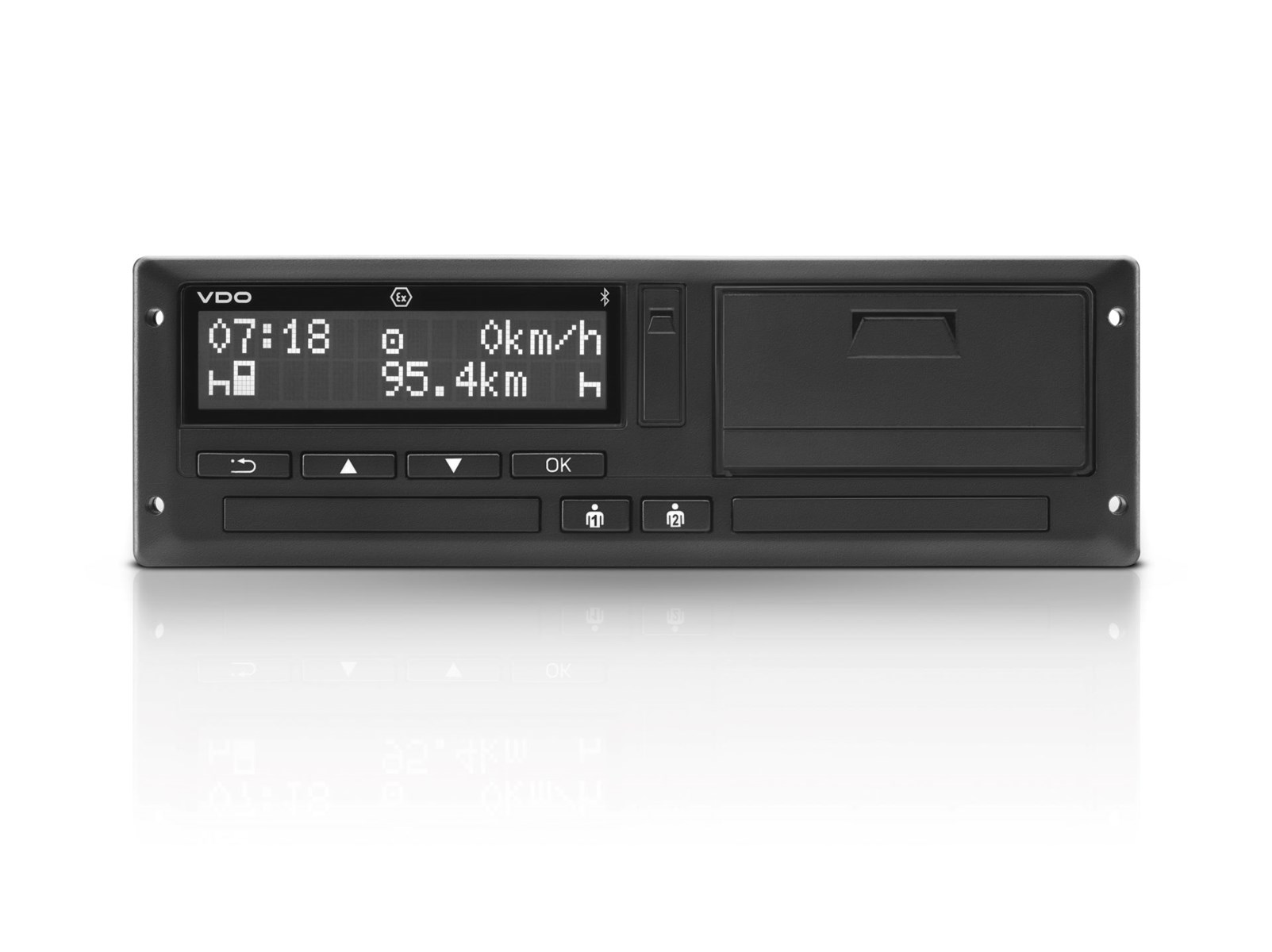Since the introduction of the digital tachograph in 2006, the technology in that little box has been getting smarter and smarter. And from August 2023, the second version of the smart tachograph will be introduces in the first new vehicles on Europe's roads. This marks the beginning of a new era for the tachograph.
But what exactly makes it a true enabler of safe and fair competition in the European single market? We have summarized the most important features.
Record data, supply data
For the first time in its now hundred-year history, the tachograph has been assigned further control functions by the legislators that go beyond the recording of driving and rest times as well as speed. Here is an overview of the data that the second-version smart tachograph VDO DTCO 4.1 also records:
- driver and vehicle identification
- border crossings for cabotage trips and driver postings
- loading and unloading operations
- vehicle position
- working hours
- shortened rest periods, which can be taken twice in a row
- etc.
Smartly connected with the DTCO 4.1
Until now, a mobile tool such as SmartLink or a card reader was needed to read out the data on driving and rest times. With the second version of the intelligent tachograph, connectivity has been increased once again. In addition to the ITS interface, which must be implemented in the new tachographs, the DTCO 4.1 also has a Bluetooth interface.
Trustworthy data through maximum data protection
The smart tachograph provides trustworthy data, but how secure is it? Fleet operators can breathe a sigh of relief! The DTCO 4.1 fully complies with the high security and data protection standards for processing personal data and carries the security certificate in accordance with the ISO/IEC 15408 standard with the EAL 4+ test level (Evaluation Assurance Level). In addition, it already uses data from the European satellite navigation system Galileo, which will provide a further plus in security in the future.
Optimally located with DTCO 4.1 and Galileo
The smart tachograph automatically detects the current location of a commercial vehicle or whether a border has been crossed via the European Galileo signal. As soon as the operator of the Galileo satellite system makes position data available in authenticated form, this will provide a further boost to data security. Fleet operators need not worry, however: even in the transition phase, there is legal certainty for all parties involved thanks to the Regulation (EU 2023/980) recently adopted by the European Commission.
More data storage
The smart tachograph (2nd version) is also future-proof in terms of data storage. It is already suitable for the new driver cards with extended storage capacity, which is not mandatory until the end of 2024. Collected data must then be stored for 56 days instead of the original 28 days. Despite this, the new tachograph can of course also process all other generations of driver cards currently in circulation.
New icons for new functions
Since the introduction of the digital tachograph, drivers have also received visual support in operating the tachograph. Icons make it easy to recognize the respective function. With the introduction of the new second-version smart tachograph and its extended functions, the DTCO 4.1 gets additional pictograms. Here is an overview:





